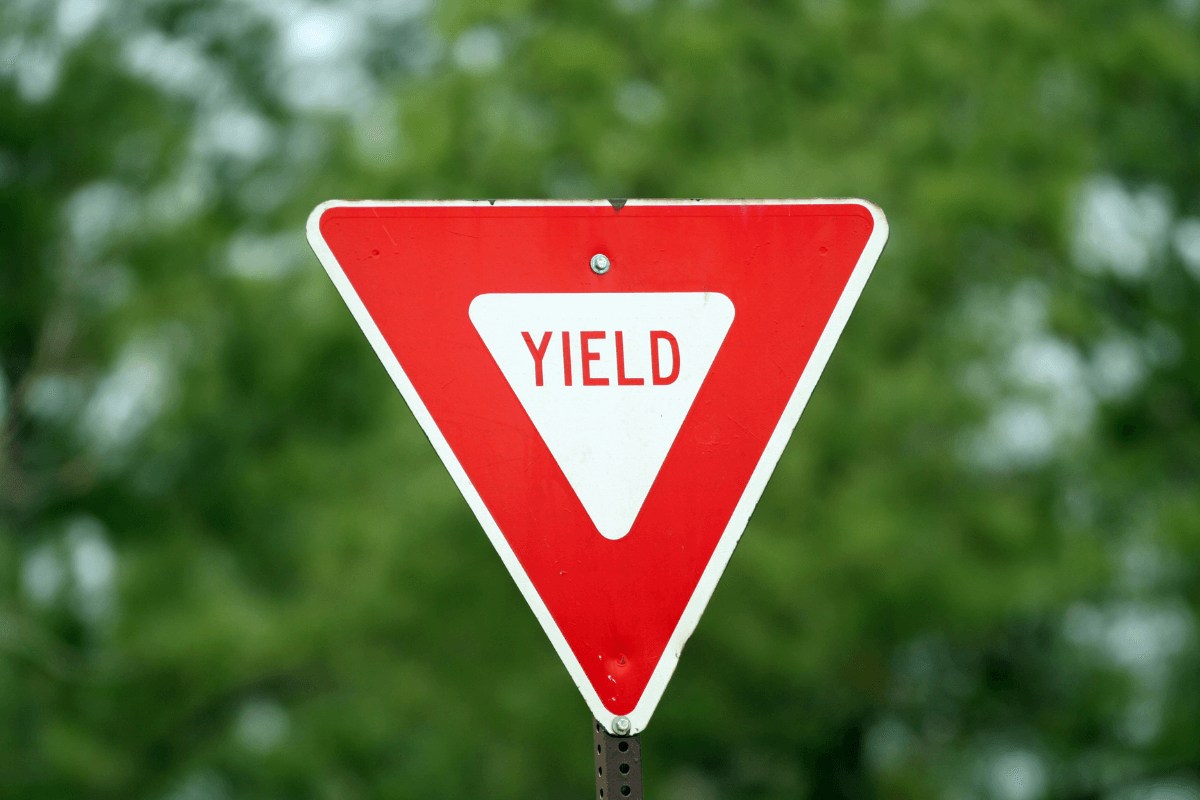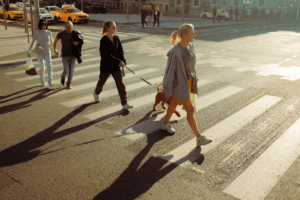Right of Way Rules in California: Overview (2024)

If you are injured in a car accident, you likely want to know who had the right of way in your car accident. However, that can be difficult when the right-of-way rules vary so broadly.
That’s why in this blog post, we cover California’s right of way laws in detail. First we will discuss, what is the right of way in driving. Then we go into detail about when you are required to yield the right of way.
This will include:
- Right of way at a four way stop
- U-turn right of way
- Pedestrian right of way and;
- Cyclists right of way.
Let’s begin.
What is the Right of Way in Driving?
In driving, the “right of way” is the legal right to proceed.
Generally, California defines yielding the right-of-way as allowing another driver or pedestrian to proceed first when they both arrive at the same location.
When Are Your Required to Yield the Right of Way? (Specific Situations)
The California Vehicle Code has several sections that describe specific situations:
- Entering traffic: yield to oncoming traffic before reentering the travel lanes.
- Parking Lot Right of Way: When leaving a parking lot or driveway, yield to pedestrians and other vehicles.
- Freeway or divided highway: yield to other vehicles when making a left or right turn.
- Right turn into traffic: yield to pedestrians and bicyclists on the sidewalk or roadside.
- Making a left turn: you must always yield to every other vehicle near you.
- Three-way intersections: drivers on the larger road have the right-of-way.
- Intersections without stop signs or lights: yield the right-of-way to those already at or in the intersection, as well as to pedestrians and bicyclists.
Four-Way Stops and Malfunctioning Lights

In general, the first vehicle to arrive at the stop has the right-of-way.
After that, each driver who arrives after the first car is allowed to go in the order they arrived. If you stop behind a car, you must still stop when you reach the sign and cannot simply roll through.
When a controlled intersection has traffic lights, but they are either not working or malfunctioning, drivers must treat it as a four-way stop. If a police officer is directing traffic, then they must obey the officer and ignore the malfunctioning lights.
U Turn Right-of-Way
Drivers wishing to make a U-turn across oncoming lanes of traffic must follow the same rules as when they want to make a left turn. They are required to yield the right-of-way to all vehicles and pedestrians.
If there is a left-turn arrow at an intersection, drivers should wait until it turns green to complete their U-turn. They should not attempt a U-turn if there is a sign prohibiting this action.
Pedestrian Right-of-Way

The basic rules governing pedestrians on California roads are:
- Motorists must stop within five feet of a crosswalk to let pedestrians pass.
- Vehicles must yield the right of way to blind persons.
- Motorists are prohibited from passing other vehicles waiting at a crosswalk.
- Pedestrians must follow traffic laws.
In general, pedestrians always have the right-of-way under California law. Even if they fail to follow the rules of the road, the law still requires that motorists yield the right-of-way.
Right-of-Way for Bicyclists (Drivers and Pedestrians)
While Cyclists are given the right-of-way in many instances, they must yield it to pedestrians.
On larger roads with higher speed limits, cyclists are entitled to use a full lane if they can keep up with traffic.
If not, the law requires them to use a bike lane or keep to the far right side of the road to reduce the risk of auto accidents. Motorists must also respect the bicyclist’s space and provide “Three Feet for Safety.”
Finally, automobile drivers must yield right-of-way to bicyclists at intersections where the driver is making a right turn. If a bicyclist is approaching the intersection in the bike lane, the driver must wait until the biker has passed by before making their turn.
While bicyclists must use caution to protect themselves, the driver has a higher responsibility to prevent injury to the biker.
Consequences for Ignoring the Right of Way Laws in California
Every year, California sees thousands of car accidents on its roads. California’s right-of-way laws exist to maintain order on busy streets. Failing to yield the right of way often causes immense property damage and bodily damage, from catastrophic injuries to fatal injuries. In fact, more than 3,000 people lost their lives in California traffic collisions in the last reporting year. Failing to yield the right of way is the fourth leading cause of critical car accident injuries and fatalities .
According to the Insurance Information Institute, failing to yield the right of way caused 4,239 fatal car accidents nationwide, and 7% of all traffic accident fatalities were due to a right-of-way violation. Laws can vary by state or municipality, and some drivers may fail to yield to the proper vehicle, bicyclist, or pedestrian.
 Were You Injured in a Right of Way Accident? (Curtis Legal Group Can Help)
Were You Injured in a Right of Way Accident? (Curtis Legal Group Can Help)
If you or someone you love was injured by a driver ignoring right-of-way laws, we are ready to listen to your concerns and answer your questions during a free initial consultation. Contact us through our online form to schedule a meeting with a skilled California auto accident attorney today.

 Were You Injured in a Right of Way Accident? (Curtis Legal Group Can Help)
Were You Injured in a Right of Way Accident? (Curtis Legal Group Can Help)